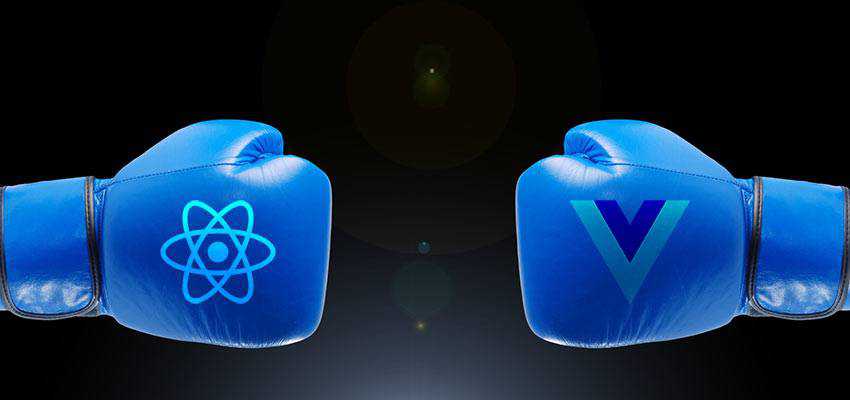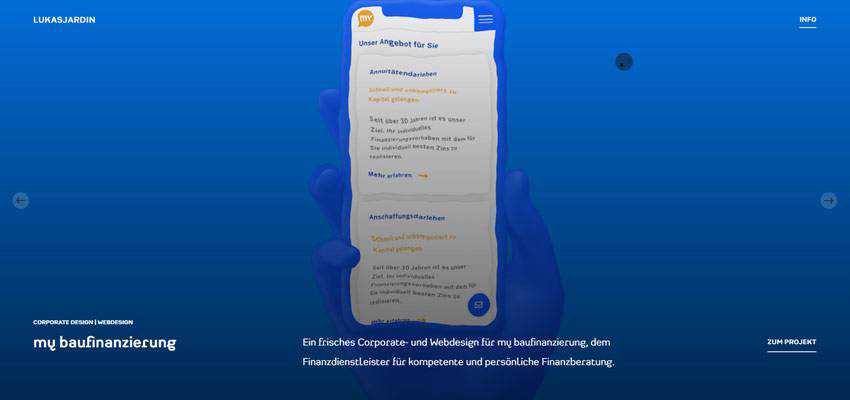Free Text Search (New)
Read more at https://www.phpclasses.org/package/11231-PHP-Search-for-data-taking-common-words-typed-by-users.html
The report “Garcinia Cambogia Extract Market by Segmentation, Key Vendors and Opportunities “, has been prepared based on an in-depth market analysis with inputs from industry experts.
Garcinia Cambogia a small, sweet tropical tree fruit also known as Malabar tamarind. Other names for Garcinia Cambogia are Assam Fruit, Gorakkapulli, Panampulli, Manda Huli, Goraka Pulli, Mangosteen, and Vadakkan Puli. Garcinia Cambogia is obtained in different colors depending on the spices such as yellow, green and red. Garcinia Cambogia extract is a hub of vitamins B, Thiamin, Folic Acid, Niacin, Magnesium, Vitamin C, Manganese, Potassium and Hydroxycitric Acid (HCA). Hydroxycitric Acid in Garcinia Cambogia Extract is appetite suppressant which reduces cravings and decrease the urge to consume calories. Hydroxycitric Acid also helps in managing stress hormones, increase serotonin level, speed up metabolism leading to better mood sleep and reduce belly fat. Garcinia Cambogia Extract not only improves your overall health, but also prohibits the conversion of calories into fat. Hydroxycitric Acid inhibits the production of an enzyme that slows down the metabolism rate of the body. Because of this, the body converts the extra calories into glycogen. Garcinia Cambogia extract also helps the body to build more muscles.
Get Free Sample Copy Of This Report @ https://www.marketresearchreports.biz/sample/sample/12834
Market Segmentation:
Garcinia Cambogia Extractmarket is segment on the basis of form, distribution channel and region. On the basis of form market is segmented into powder, capsule and liquid.Garcinia Cambogia Extract come in different forms but the most popular form is the powdered form. Weight loss has become a common desire for many people these days and with huge rage of alternatives available it becomes quite difficult task for consumers to select one which they want for themselves. Exactly what makes garcinia cambogia extract powder hugely popular is the fact that it is natural, safe to consume and has proven positive results for weight loss. Garcinia cambogia extract powder with 100% HCA is probably the best remedies for weight loss. On the basis of distribution channel the market is segmented into supermarkets/hypermarkets, convenience stores, medical stores and online stores. Online Stores is expected to hold a relatively high share in the garcinia cambogia extract market. Medical stores have also contributed significantly to the growth of Garcinia cambogia extract market over the forecast period. On the basis of region garcinia cambogia extractmarket is segmented into North America, Latin America, Western Europe, Eastern Europe, Asia Pacific, MEA and Japan.
Market Regional Outlook:
Regional segment for the market of asparagus is divided into seven different regions: North America, Latin America, Western Europe, Eastern Europe, Asia Pacific, MEA and Japan. Among these segment Asia Pacific is expected to have the major market share globally, as it is the largest consumer of garcinia cambogia extract. In Asia Pacific region the India is generating the major revenue. In terms of revenue Africa is the second prominent contributor in the garcinia cambogia extractmarket.
Market Drivers:
The rise in demand for weight loosing supplement is expected to drive the growth of global garcinia cambogia extract market. Garcinia cambogia extract is not only used as a supplement for weight reduction but it also exhibits some special properties such as it helps to reduce the cortisol level, reduce risk of heart disease, reduce risk of ulcer and improve lipid profile. It also helps in maintaining better metabolism and better cardiovascular health. The versatile properties of garcinia cambogia extracthas defiantly attracted the pharmaceutical companies which will drive the garcinia cambogia extract market to a greater extent.Moreover, the market is also driven by the increasing awareness among the consumers about the health benefits associated with garcinia cambogia extract.
Market Key Players:
Some of the key players in garcinia cambogia extractmarket are Power up health, BioGanix, Nature wise, Naturabest, NOW Foods, Top Secret Nutrition, Natrol, Global Health Ideas, Quality Encapsulations, shape organics,Search Results, Potent Organics, St.Botanica, Healthawin, Whole Body Research, NutriRise, PureNutria, Gaia Science? and Morpheme Remedies among others.
Request For TOC @ https://www.marketresearchreports.biz/sample/toc/12834
The report covers exhaustive analysis on:
MRR.BIZ has been compiled in-depth market research data in the report after exhaustive primary and secondary research. Our team of able, experienced in-house analysts has collated the information through personal interviews and study of industry databases, journals, and reputable paid sources.
The report provides the following information:
• Tailwinds and headwinds molding the market’s trajectory
• Market segments based on products, technology, and applications
• Prospects of each segment
• Overall current and possible future size of the market
• Growth pace of the market
• Competitive landscape and key players’ strategies
The main aim of the report is to:
• Enable key stakeholder’s in the market bet right on it
• Understand the opportunities and pitfalls awaiting them
• Assess the overall growth scope in the near term
• Strategize effectively with respect to production and distribution
MRR.BIZ is a leading provider of strategic market research. Our vast repository consists research reports, data books, company profiles, and regional market data sheets. We regularly update the data and analysis of a wide-ranging products and services around the world. As readers, you will have access to the latest information on almost 300 industries and their sub-segments. Both large Fortune 500 companies and SMEs have found those useful. This is because we customize our offerings keeping in mind the specific requirements of our clients.
About Us
MarketResearchReports.biz is the most comprehensive collection of market research reports. MarketResearchReports.Biz services are specially designed to save time and money for our clients. We are a one stop solution for all your research needs, our main offerings are syndicated research reports, custom research, subscription access and consulting services. We serve all sizes and types of companies spanning across various industries.
Contact Us
Mr. Nachiket
State Tower
90 Sate Street, Suite 700
Albany, NY 12207
Tel: +1-518-621-2074
Website: http://www.marketresearchreports.biz/
E: [email protected]
It seems like every industry has their own set of fiercely debated topics. They pit tool against tool, theory against theory and can be great fun (or infuriating, depending upon your perspective). But since web designers spend an inordinate amount of their lives online, our debates tend to stir a whole lot of both participation and passion.
Today, we’re going to look at some of the subjects of debate that have taken on a life of their own. Some are completely organic to the industry, while others have been adapted from society at large. Regardless, they have resulted in some epic arguments.
So, let’s poke the bear and bring up those topics you may not want to discuss during an after-work get together!
If you use a page builder – does that make you something less than professional? Does it mean that you’re taking unnecessary shortcuts?
These are among the questions raised by the use of the popular class of drag-and-drop tools. They’re most often associated with DIY providers like Squarespace and Wix, in addition to WordPress – thanks to a plethora of available plugins.
Part of the appeal of a page builder is that, in theory, it should allow a non-designer to put together a complex layout full of high-tech goodies. In practice, this isn’t always the case. Even an advanced tool can’t fully make up for a novice user who makes questionable decisions.
For web designers, some see the use of this type of tool as akin to making a frozen pizza. Sure, it’s easier. But the final product may miss some of that authenticity that would make it truly stand out. In some ways, it’s a similar argument to the one we had way back when WYSIWYG tools like Dreamweaver first hit the market. It’s the classic battle of tradition vs progress.
Eric’s Take: This one still elicits a lot of debate – including from yours truly. I’m proud to say that I’ve stood firmly in both camps at various times. I used to have plenty of reservations regarding page builders. It seemed like their aim was to replace professional designers (although, they were kind of lousy at it). Lately, however, I’ve warmed up to them a little. Like most relationships, this one is a bit complicated.

The future of the web is said to be based on JavaScript. At least, it certainly seems that way, what with all the hype surrounding Gutenberg and other JS-based interfaces. And it’s easy to see why. The thought of a website as a lightning-fast, completely interactive application certainly sounds exciting.
But we’re not necessarily going to build those UIs of tomorrow with vanilla JavaScript. Instead, we’re going to leverage a top front-end framework like Vue.js or React to help us get there. That’s where this argument gets real.
Both of these packages are quite capable. However, there are core differences that tend to split the development world into two camps.
Vue is widely thought to be easier to learn and is much more of a traditional community-based open source project. In some ways, it seems to be the feisty underdog that is always nipping at React’s heels. Never underestimate this kind of appeal.
React, on the other hand, uses a more hardcore JavaScript syntax and is a great fit for highly-complex applications (such as the aforementioned Gutenberg). It’s also built and maintained by Facebook – which is either wonderful or terrifying.
Eric’s Take: Frameworks, regardless of language, are always hotly debated. It doesn’t seem like either project (or competitors like Angular) are going away any time soon.
Personally, I always advocate for peace. Therefore, I think everyone should use what they’re comfortable with. If you can build what you need with your favorite framework, go for it! Otherwise, we’re arguing about apples and oranges.

Okay, this argument goes well beyond just designers. It’s been going on for decades – even before the web was a mainstream medium. But it’s still quite relevant in our industry.
Back in the day, many creative professionals chose Mac as it offered a lot of tools that simply weren’t available on a Windows PC. Photoshop, for instance, was Macintosh-only until version 2.5. Not to mention that, from the very beginning, it seemed that Apple courted a cult-like following of devotees. Bill Gates and Microsoft weren’t in the same league when it came to the cool factor.
These days, the Apple-faithful also battle another juggernaut – Google. When it comes to the mobile device wars of this decade, Microsoft is nowhere to be found (at least, not in the OS market). Therefore, Google and its Android OS have taken over as the boogeymen.
In both segments, Apple has a much smaller (yet, not insignificant) market share. When it comes to traditional computers, Windows has a commanding 87% of the market, compared to just under 10% for Mac OS. Mobile is a little closer, but Android still dominates with a 70% to 28% edge.
Eric’s Take: The differences in hardware on these various platforms seems negligible. On the computing side, Apple charges a premium for slick industrial design, while a Windows PC can be built on the cheap and still look decent enough (for my tastes, at least).
Still, whenever I attend events such as WordCamps, I see those ultra-expensive MacBook Pros everywhere. Yes, they are quite beautiful. But my vote still goes with the PC for providing much more bang for the buck.
The mobile competition seems a little closer. On one hand, there are a number of cheap Android devices available for the budget-conscious among us. Yet, you can still waste a few paychecks on a Google Pixel or Samsung Galaxy – just the same as you can with an iPhone. The difference is that Android provides a wider array of options (along with varying degrees of hardware quality).
Whichever you choose, you’re still getting a high-quality operating system. That said, it’s mainly a matter of how much you’re willing to pay in order to look cool.

Finally, we have arrived at the one category of argument that will never go out of style. One of the truisms of design and development is that there is more than one way to achieve a desired goal. Whether you want to make your site responsive or add a shopping cart – there are no shortage of options and approaches.
Not only are these debates ubiquitous (just post a question in a support forum and see how many different answers you receive), they are perhaps the most entertaining and useful. People will often try to one-up each other and might even boast of their solution over others.
What’s really fascinating is that we can take wildly different approaches and still reach the same conclusion. Some are more efficient than others, but still worth discussing nonetheless.
Eric’s Take: Usually, this is all in good fun. It shows the true nature of the community and its passion for solving problems. And these solutions also serve as an archive that is there for us whenever we need a helping hand.

The classic arguments above can sometimes become tired and even a little less than friendly. Yet, they are a representation of just how passionate the designer community is. Sure, some people just like to butt heads (see what I did there?) – but in most cases, these debates come from a place of genuine caring. It’s also a healthy part of any open society.
So, feel free to join in a debate. Sometimes it takes you around in circles, but there’s a chance that it may also help push things forward.
The post The Biggest Designer Debates appeared first on Speckyboy Design Magazine.
If you want to stand out from the competition and make yourself heard, you need to go the extra mile. That’s the first rule of the online jungle of these days. However, it does not mean that you need to reinvent the wheel or have a bunch of money to afford a grandiose solution in order to impress.
The thing is, despite all the hustle and bustle around big ideas, small details still matter. They always make a difference. You can have a regular website with the basic structure and conventional design and still stand out from the crowd. All you need to do is to enrich the user experience with some little, well-thought-out features. And it seems that many creatives have an eye on this workaround since modern websites are teeming with microscopic solutions. Therefore we can witness many tiny trends.
One of such small, but smart and impressive trend is a liquid-like effect. Its superpower lies in the fact that it just quietly works – enhancing the overall user experience and reinforcing the general impression. It is smooth, elegant and sophisticated.
Consider the personal portfolio of Davide Perozzi, Nature Elixir and Nesatex. These three examples show the tendency from different angles.
Davide Perozzi uses a watery behavior to put the tagline of his website into the spotlight without making it loud. The solution is barely perceptible here. Nevertheless, it is enough to grab attention. It gives a clean and neat interface a lovely zest. Also, it helps to reflect the creative soul of the artist, as well as show everyone that Davide is one who follows the trends and knows how to apply them without overpowering the audience.

The team behind Nature Elixir leverages water surface within one of the sections of the homepage slider. You are welcome to play with it using your mouse cursor. You can leave ripples and traces – disturbing the serenity of the surface. Here the solution is used to support the product’s essence as well as lighten the mood.

In the case of Nesatex, the liquid-like behavior is a mere extravaganza that gives the hero area a nice touch of individuality and peculiarity. It is also featured in the slider, but this time it spices up slides with some extra dynamics as well as enriches the transitions between them.

The liquid-like effect can be seen everywhere. It is quite popular among website artists nowadays. Its sphere of usage is not limited to just backgrounds in hero areas, even though it is here where it flourishes. You may have already seen that it is an ideal candidate for taking sliders to the next level. Consider eumRay Academy, where the solution benefits the overall user experience with fanciful transition effects.
It has a conventional design in terms of layout and coloring. However, the liquid-like effect keeps it from looking banal. It makes the interface feel intriguing and fancy. And, at the same time, this technique manages to save its business-like nature. The solution is used in the slider and as a main revealing effect for showing sections on the scroll.

The teams behind Fleava and Kombu Drinks easily enrich the classy aesthetics with a note of bizarreness. In both cases, the latter serves as a lovely transition effect between the slides that make this basic carousel look original and inviting.


When it comes to transition effect, the trend can be beneficial for all the slide-out navigation menus that are hidden behind hamburger buttons. Let’s take a look at Ruya Digital as a vivid example. Every opening and closing of the main menu is accompanied by a special layer that flows down from the top.
It has a beautiful retro gradient background, with very smooth and subtle behavior. It vividly separates the front side from the back – yet still skilfully ties everything together.

The liquid-like effect can be brought into play as an alluring twist. Consider Balconi and the personal portfolio of Lukas Jardin.
The creative team of the Balconi official website uses the solution to add some spice to the fairly trivial design of the homepage. As you can see, the background has been split into two horizontal sections. The top part is set in motion. And its movements are so gentle and subtle that they add to the aesthetic – rather than make everything about themselves. The solution provides users with some unobtrusive focus anchors as well as keeps the theme alive (literally).

Lukas Jardin matches the tone of his creative personal portfolio with liquid-like behavior. Here it is applied to images placed in the hero area slider. The idea leaves a good first impression. It does not overwhelm nor annoy – it just makes things exciting.
The effect nicely cooperates with the rest of the website, adding a little more personality to the project. It is an excellent example of how to make a regular image-based carousel feel special and unique.

Of course, one of the areas where the liquid-like effect feels at home are designs with a water-inspired theme. Let’s explore Azure The Oceanic and Cobra Ultra Swipe.
The name of the first website speaks for itself. From the get-go, it becomes evident that the water theme runs the show here. And, without a skilfully reproduced liquid-like behavior, it will undoubtedly lose something. Much like in the case of Nature Elixir, here you are invited to participate in a small playground with a dynamic surface where you can leave ripples. Fun and engaging.

As for Cobra Ultra Swipe, even though the nameplate does not make the story behind the project clear at first, the hero area says it all. The website is dedicated to underwater goggles, so it comes as no surprise that the team has chosen water motifs. The liquid-like effect that can be seen in the hero area as well as throughout the entire website fits like a glove.

The magnetic power of this tiny trend lies in its origin. In essence, it is a skillfully imitated water behavior. And we all know, there are three things people can watch forever – and water is one of them.
The liquid-like effect is just destined to win over visitors’ hearts. And it certainly does that. Used in small doses it effortlessly contributes to the projects – making the user experience unforgettable.
The post Harnessing Liquid Effects in Web Design appeared first on Speckyboy Design Magazine.
Kelly Pritchett, PhD, registered dietitian, Central Washington University, Ellensberg, WA.
Clifford Rosen, MD, director of clinical and translational research and senior scientist, Maine Medical Center Research Institute, Scarborough.
Irina Todorov, MD, Center for Integrative Medicine, Cleveland Clinic.
The Lancet: Diabetes Endocrinology: “Effects of vitamin D supplementation on musculoskeletal health: a systematic review, meta-analysis, and trial sequential analysis.”
Cleveland Clinic: “Vitamin D Vitamin D Deficiency.”
Annals of Oncology: “Vitamin D supplementation and total cancer incidence and mortality: a meta-analysis of randomized controlled trials.”
New England Journal of Medicine: “Vitamin D Supplements and Prevention of Cancer and Cardiovascular Disease.”
NIH Office of Dietary Supplements: “Unit Conversions.”
Journal of the American Medical Association: “Trends in Use of High-Dose Vitamin D Supplements Exceeding 1000 or 4000 International Units Daily, 1999-2014.”
U.S. Preventive Services Task Force: “Final Recommendation Statement: Vitamin D Deficiency: Screening.”
Article source: https://www.webmd.com/vitamins-and-supplements/news/20190426/is-vitamin-d-hype-wishful-thinking